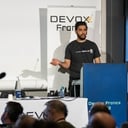Since selling my startup, I've been continuously pondering a single question: "Did we truly achieve Product-Market Fit?"
Despite the successful exit, I often question whether we truly attained Product-Market Fit (PMF). This inquiry constantly occupies my thoughts, along with my co-founder Ali Selim Aytuna, as we contemplate the significance of this renowned concept and how we can assist startup founders in attaining PMF.
To address this, we decided to break down PMF into smaller components, leading us to develop a framework that aids early-stage founders in reaching PMF.
We drew upon experiences and theories from the Lean Startup World, finding inspiration from the works of Eric Ries, Steve Blank, Brian Balfour, Marty Cagan, Alexander Osterwalder, and Ash Maurya.
This framework, called the 7-Fit Framework towards Product-Market Fit, comprises 7 distinct fits, each assigned a score from 0 to 10.
While some fits encompass a wide range, the 7-Fit Framework primarily targets startup founders, corporate innovators, and product builders operating in web and mobile businesses with B2B and B2C models.
What is the 7-Fit Framework Towards Product-Market Fit?
Our intention in creating this model was to make it actionable and tangible, aiming to reduce ambiguity for early-stage startups. Consequently, we devised each fit or step within the framework to help teams identify their problems and overcome challenges.
Building a repeatable and scalable business revolves around scientific thinking and experimentation. The more specific and actionable our venture-building models are, the higher the likelihood of success.
The 7-Fit Framework consists of the following fits:
- Customer-Problem Fit: Focuses on desirability and idea validation.
- Problem-Solution Fit: Addresses feasibility.
- Customer-Solution Fit: Centers around usability.
- Product-Channel Fit: Mainly concerns growth within a distribution channel.
- Channel-Model Fit: Deals with the balance between ARPU and CAC.
- Model-Market Fit: Discusses pricing and market share.
- Product-Market Fit: Concentrates on achieving double-digit growth.
Based on the current state of a startup, we calculate scores for each fit and provide guidance on achieving the perfect fit at each stage.
The first three fits, known as Pre-Launch Fits, must be achieved before launching a product.
The remaining four fits, called Post-Launch Fits, typically occur on the path to PMF after the actual product launch.
As innovators, we tend to be biased toward our ideas. During my weekly meetings with founders, I often encounter the prevailing mindset of "Build it and they will come" among many startup founders and product builders.
Ultimately, customers are not purchasing products; they are seeking solutions to their problems. They don't really care about our "awesome" products.
In this article, I will primarily focus on the initial stage we call Customer-Problem Fit or the Idea Validation process.
Customer-Problem Fit: Validating Your Idea before Building a Product
In our first fit, Customer-Problem Fit, we emphasize understanding the problems faced by early adopter customers. This stage revolves around idea validation, drawing upon Design Thinking and Jobs to be Done as supporting models.
During my mentoring sessions with early-stage startup founders, I often observe a recurring attitude. When I ask them about their target customers, they tend to talk about how great their product is!
It's challenging to shift from the "solution space" to the "problem space" when you're eager to conquer the world with your "almighty" product. However, idea validation is the most crucial step in the entire startup journey. If a startup team overlooks this step, they may risk wasting years of their lives.
To achieve Customer-Problem Fit, a founding team must strive to discover the specific problems faced by a particular early customer segment. When they uncover a significant problem that existing solutions fail to address, it marks the moment of opportunity for the founding team.
In our idea validation courses, we emphasize the importance of customer interaction. This process, known as "problem discovery," involves asking open-ended questions to understand customers' desired outcomes and challenges within a specific context.
We acknowledge that some introverted founders may be reluctant to conduct one-on-one interviews with potential customers. In such cases, we suggest their participation as observers and recommend seeking assistance from team members or individuals better suited for engaging with customers.
The idea validation process aims to prove or disprove the initial problem hypothesis. If the founding team fails to identify a pattern of problems during customer interactions, we advise exploring new ideas within the same context or targeting a different early customer segment to continue the discovery process.
As aptly stated by Ash Maurya, "Love the problem, not the solution." How can a founding team ensure the usability of a solution if they begin building a product without comprehending the problem their potential customers face?
Validating an idea and moving on to building an early solution can be accomplished within six weeks. During customer interviews, it is crucial not to pitch a solution. The primary objective is to gain a deep understanding of the real problem.
What's Next If You Have Validated Your Idea?
Upon completing the Customer-Problem Fit stage, we transition to the Problem-Solution Fit (feasibility) and Customer-Solution Fit (usability) stages, where we begin developing a solution.
Ideally, if the idea validation phase goes well, the founding team should have insight into the type of solution that would appeal to their early adopters.
For example, if the initial startup idea revolves around a babysitter marketplace connecting busy moms with babysitters, the founding team should determine, during customer interviews, whether to prioritize a mobile app or a desktop app. They should also gain an understanding of the viable business model (freemium, subscription, transaction-based, etc.) and the demographics of their early adopters. Armed with this knowledge, the founding team can proceed to build an early product that customers are willing to pay for.
Once an early product or minimum viable product (MVP) is developed, it's time to test it with customers to gauge its usability and achieve Customer-Solution Fit.
This stage is commonly referred to as the Build -> Measure -> Learn loop in the Lean Startup world. Here, the founding team begins considering feasibility by asking, "Can we build a usable solution with the resources at hand?"
A Quick Summary: Why You Should First Start With Validating Your Idea?
Without a problem, there can be no solution. Around 40% of startups fail due to a lack of market need. Thus, achieving Customer-Problem Fit or validating an idea is the initial step in building a business.
The beauty of idea validation is that even solo founders or full-time professionals working on side projects can validate their ideas without assembling a team.
Many startups have developed products and acquired paying customers but struggle to grow their businesses. In most cases, a closer examination of their business models reveals that they built products without validating their ideas.
As a founder or product builder, avoid falling into the idea trap. Prove your idea first, and then build your solution!







